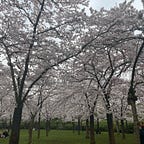How To Write Setting So People Want To Read It
When writing about setting writers often think about what colours to use or wheither or not the kitchen is next to the dining room but the key to writing setting is commonality.
Find what you and your target audience have in common.
When thinking about setting, the writer wants to look at their target audience, are they teenagers, adults or children? Children won’t care if the kitchen is next to the dining room or living room but teenagers and adults might want a picture of what the character’s house looks like compared to their own.
Is your target audience from New Zealand, United States or East Asia? Because this will impact how they see the world around them. “House” for example will mean something completely different for each country. In New Zealand houses are usually from the 1920’s, partly because we are a prctical bunch and if already have a house we wouldn’t think to build another one, but also partly because we don’t like tearing down structures. In the United States, I’ve never been, but from my understanding houses are very large and the bigger the better. In East Asia, the only country I’ve been to is Indonesia, but from my understanding houses are small with little to no heating.
Once you’ve identified your target audience the next step is to look at description.
Description:
Description is a little tricky. The writer wants the reader to understand what the world looks like but the reader doesn’t want to read pages and pages of what a house looks like.
There is an art to finding the balance, every author’s and reader’s sense of balance is slightly different. Here is mine:
Write description from the character’s eye the way they would be discovering the area around them.
Everyone looks at the world differently, what you take notice of will not be the exact same as the person next to you.
Which paragraph sounds more interesting.
1) The orange brick home sat on a field of grass that was silent except for the occasional jostle of wind. Cows, calves and sheep did not roam this land, no human had touched it for years. Windows were cracked and left open, rain from the night before seeped through the cracks and mould grew along the walls. There were only two window shutters, both holding on by a single hindge. The roof was still in tack, by pure luck. The swimming pool was dry and green, a hole in the ground, nothing more. Rain no longer filled the pool, only cracks and moss grew in that hole.
2) A young woman about the age of 23 jumped off her horse outside a small, quiet home. Hoping there would be water inside to quench her parched mouth she knocked vigorously. The rotting door slammed to the ground and the particles of dust flew up in a swarm. The young woman coughed making her parched throat more dry. Inside the house was dark despite the midday sun burning her skin, the coolness was refreshing but the cracked windows caused panic to spike. There was no one here. No one for hours and hours of riding and this young woman needed a drink of water. Hoping there would be a tap outside she walked to the back of the house only to find a dry hole in the ground that used to be a swimming pool. She turned back and walked to where she had left her horse. But her horse wasn’t in sight.
I find the second one more interesting. The reader gets a picture of what the surroundings look like but from the point of view of the character, this way the reader gets a look into what is important and isn’t bogged down with information that is unnessecary.
Making the reader feel as though they are walking with the character’s throughout their journey is the most important part of story telling.
